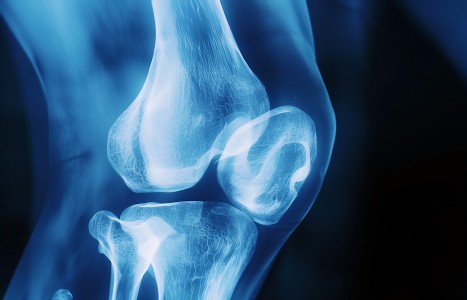While there may be no “magic bullet” when it comes to health, this should not dissuade patients or practitioners from seeking out ingredients that offer multiple health benefits. When it comes to dietary supplements, there are thousands upon thousands of choices. So, why not choose one that can address pain and assist with mental health? A supplement that can address inflammation, while also preventing certain types of cancer.
| Digital ExclusiveWhy You Don't See More Patients
According to data gathered by Palmer College of Chiropractic, only 8 percent of the U.S. adult population visits a doctor of chiropractic annually (2002 National Health Interview Survey). According to the same survey, only 20 percent of U.S. adults ever visit a DC throughout their entire lives. This in spite of the fact that in the past three months, more than 40 percent of the population experienced low back pain or neck pain lasting at least a day.1
In contrast to this, the 2012 Widmeyer Survey found that 70 percent of the U.S. adult population is "favorably predisposed" to seeing a chiropractor. This begs the question: Why has the chiropractic profession failed to reach the 50 percent (70% minus 20%) of the population that is favorably predisposed and yet will never set foot in a chiropractic office even once in their entire lives?
As of the end of last year, there were approximately 240 million U.S. adults. Of those, only 19.2 million (8 percent) will see a DC this year. According to the Federation of Chiropractic Licensing Boards (FCLB), there are approximately 72,000 full-time practicing DCs. Doing the math, that works out to about 260 patients per DC. Assuming a 12-visit average, that gives every U.S. DC an average of 60 patient visits per week.
There is a concept that is used by most marketing people called "Rogers' Diffusion of Innovations." Rogers' theory looked at how an innovation (chiropractic) was implemented in society. He divided society into five segments:
- Innovators – 2.5%
- Early Adopters – 13.5%
- Early Majority – 34%
- Late Majority – 34%
- Laggards – 16%
If we apply the 8 percent annual adoption of chiropractic to this model, we see ourselves reaching the innovators and a small portion of the early adopters.
According to Rogers, there are five stages of accepting a new innovation: knowledge, persuasion, decision, implementation, and confirmation. Again, if we apply this to chiropractic, we see that most people are caught somewhere in the knowledge and persuasion stages. They know about chiropractic and may even be persuaded that it might work, but they have yet to make a decision and implement it into their health care regimen.
The Art of Branding
Getting people to make a decision to purchase your product or service (chiropractic) has to do with your branding statement and the value propositions you extend to potential customers (patients) through your messaging. As a company (profession) becomes more established, it can evolve its messaging to reflect its greater vision of who it is in the eyes of the public.
While I'm not a fan of its food, few can deny that the McDonald's corporation (now at $24 billion a year) has done an excellent job of branding and re-branding over the past five decades. As its market share grew from the "early adopters" to the "late majority," the McDonald's messaging has gone from being specifically about what it sells to achieving a sense of happiness.
Beginning in 1960, its first slogan was "Let's Eat Out!" which drew attention to the "restaurants" as a place to get food. Other slogans from the '60s, "Go for the Goodness at McDonald's" and "The Closest Thing to Home," gave the impression of good food comparable to nice restaurants and home-cooked meals.2
Through the '70s, '80s and '90s, the McDonald's campaigns focused on the ease of buying meals, with the first use of the slogan, "You Deserve a Break Today." At the turn of the century, the slogans moved into the happiness mode with "We Love to See You Smile" and the current "I'm Lovin' It."
The McDonald's organization began with messaging that focused on what the public wanted: a small menu of food like you cooked at home at half the price of other restaurants. Once McDonald's gained its position within the market, it expanded to much broader expressions of the joy of eating.
Our Marketing Dilemma
From a marketing point of view, chiropractic in the U.S. is not far from the early days of McDonald's. According to Rogers, we are not even halfway into reaching the "early adopters" in the consumer public.
Unlike McDonald's, our messaging has been sparse and all over the map. While we aspire to be all about wellness and the full expression of health, the public is looking for a home-cooked-meal type of messaging so they can clearly understand our value and be persuaded to make a decision to "buy" chiropractic.
We need to have a clear, concise message that resonates well with the 120 million people who need chiropractic care, but will never experience it unless we learn how to communicate with them. That requires us to brand ourselves in a way that every consumer will immediately understand, see the value of and make a commitment to.
Please understand that our branding message does not define us. This should make it easier to consider an initial branding message everyone can live with.
It's actually very easy to understand what our branding message should be: just ask your patients. Forget about what you want it to be; ask them what they see as your value proposition. Ask them to sum up in a sentence or two what you should say about what you do. I think you will find that it is basic and to the point.
Chiropractic's utilization in the U.S. has grown very little percentage-wise in the past 50 years. In that same period of time, McDonald's has reached "34,000 local restaurants serving nearly 69 million people in 118 countries each day."3
Our profession needs to brand itself. We need an identity the public can accept. It needs to be about them and their needs, not about us. How much longer will we allow ourselves to go unbranded?
References
- Deyo RA, Mirza SK, Martin BI. Back pain prevalence and visit rates: estimates from U.S. national surveys, 2002. Spine, 2006 Nov 1;31(23):2724-7.
- List of McDonald's ad programs. Wikipedia.com.
- "Getting to Know Us." McDonald's Corporation Quick Facts.
Read more findings on my blog: http://blog.toyourhealth.com/wrblog/. You can also visit me on Facebook.


